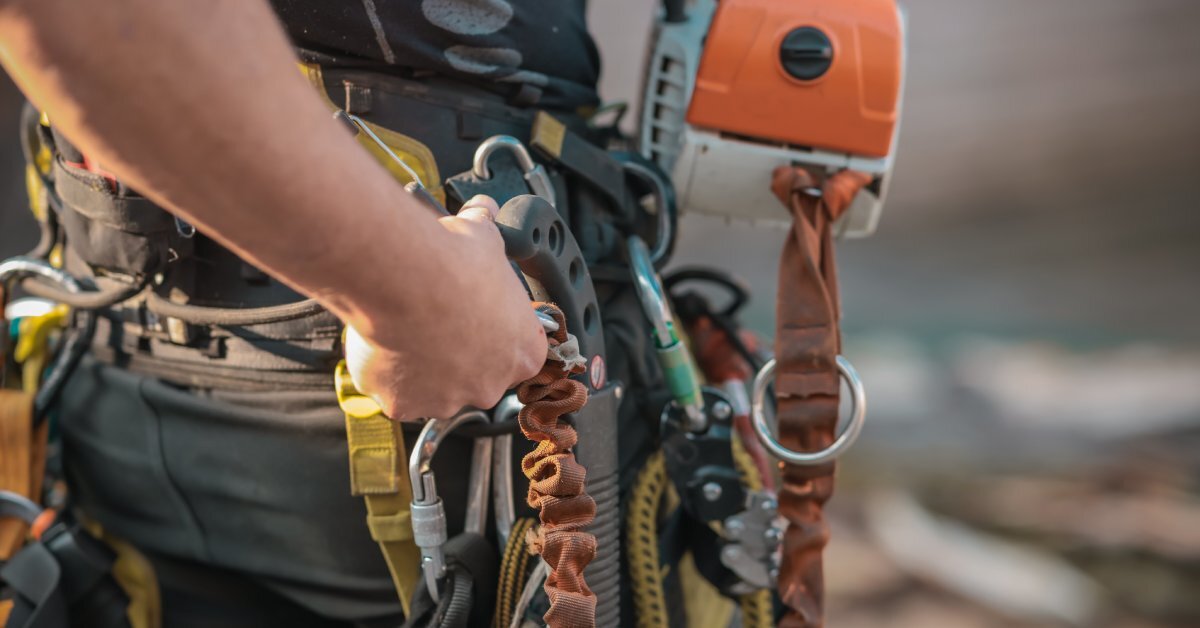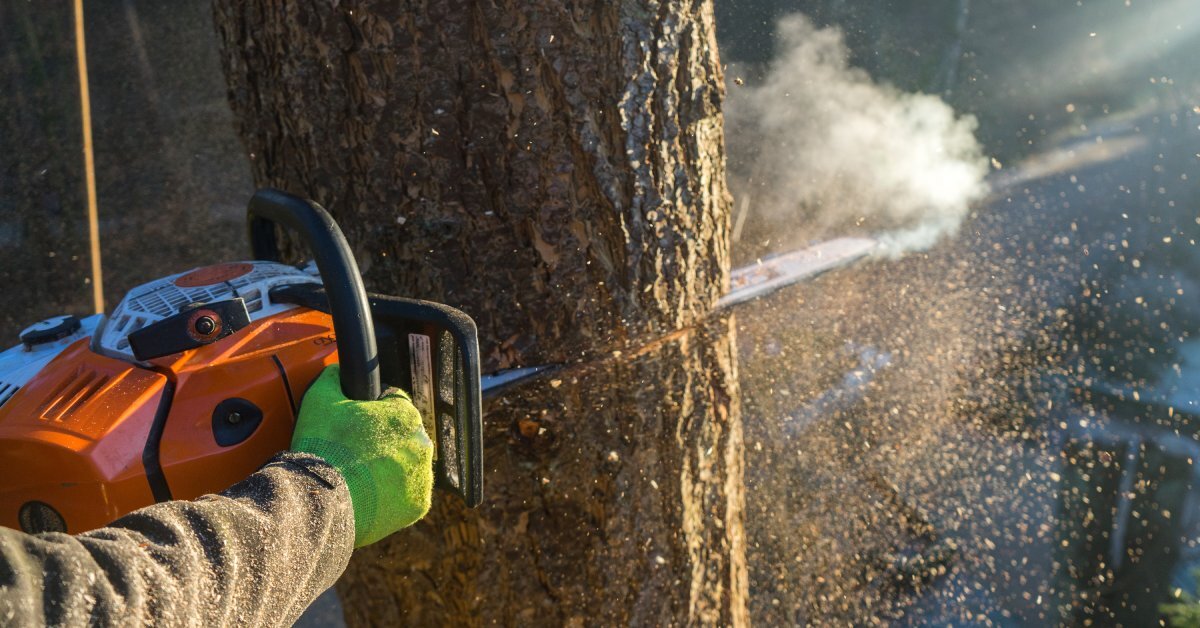As a new arborist, the right gear can make all the difference in safety, efficiency, and confidence. This guide dives into the essential climbing and rigging tools every beginner arborist needs. From harnesses that keep you comfortable during long jobs to ropes and carabiners designed for maximum strength, we’re talking about all of it. Not only will you learn what to add to your kit, but you’ll understand how each piece helps you grow in your craft.
Great tools set the foundation for developing trust in your abilities and equipment. Let’s explore the must-have gear that will get you climbing with confidence.
Climbing Harness
A well-fitted climbing harness is the backbone of your gear setup. It keeps you secure and supported while you work in the trees. Look for a harness designed specifically for arborists, as these offer better mobility and comfort during long hours aloft. Many include extra padding, multiple gear loops, and specialized attachment points for additional tools or lanyards.
Always prioritize adjustability and choose a harness that fits snugly but doesn’t restrict movement. Test it before purchasing to assess comfort, weight distribution, and ease of adjustment. Also, check its certification to ensure it meets safety standards. A good harness allows you to focus on your work, not the discomfort or insecurity of your gear.
Climbing Rope
Your climbing rope supports your weight, provides stability, and often serves as your lifeline while aloft. This arborist climbing equipment differs from general-purpose ropes and must be tough enough to withstand constant friction, exposure to weather, and heavy loads. Invest in static or semi-static ropes that limit stretch when you’re climbing or positioning.
Look for options with high visibility, as bright colors make spotting the rope in dense foliage easier. Pay attention to the rope’s diameter as well; thicker ropes are generally more durable, while thinner ropes are lighter and easier to handle.

Carabiners
Carabiners are the connectors that hold your whole system together. These small but mighty tools are essential for securing ropes, harnesses, and other equipment. Locking carabiners, which feature mechanisms to prevent accidental opening, are particularly important for arborists.
Look for ones made of durable, lightweight materials such as aluminum or steel. A solid gate closure provides a reliable link that won’t fail under pressure. Avoid overloading your carabiners or using them for purposes outside of their intended design. Keeping them clean and inspected regularly ensures their longevity and reliability.
Helmet
Tree climbing comes with risks, and a reliable helmet offers necessary protection from falling branches, tools, or slips during ascent. Arborist helmets differ from traditional hard hats, as they are designed with a lower profile to fit snugly and limit snagging on branches. Many models feature chin straps that keep your helmet securely in place even during sudden movements.
Don’t forget about ventilation! Well-ventilated helmets reduce discomfort on long, hot days. Some come with integrated visors or slots for attaching ear protection, which can make your work more efficient. Make sure you replace your helmet if it sustains a significant impact or shows visible wear.
Lanyard
A lanyard allows you to position yourself hands-free while remaining connected to the trunk or a secure branch. Adjustable lanyards give you greater flexibility to reach awkward spots, and reinforced designs made with tough materials ensure you’re supported safely. Pay attention to their abrasion resistance, as they’ll endure a lot of wear against bark and branches.
An ergonomic adjuster adds convenience, letting you quickly lengthen or shorten the lanyard as needed. Some lanyards also incorporate an energy-absorbing element for added safety in the event of a sudden drop. Always attach the lanyard correctly and inspect it frequently for signs of wear.
Prusik Loops or Ascenders
Prusik loops and ascenders make the climbing process quicker and less physically taxing. Prusik loops are made of smaller cords and provide friction controls for moving along the rope. They’re an affordable, manual option for beginners to learn efficient climbing techniques.
On the other hand, mechanical ascenders take strain off your muscles, using cam-assisted grips for smoother and more controlled movement. While loops are more portable and versatile, ascenders offer excellent speed and efficiency, especially for taller or more challenging trees.

Handsaw
A handsaw may not be the first thing that comes to mind when thinking about climbing gear, but don’t climb without it! These compact saws are perfect for pruning smaller branches and making smooth, precise cuts. Most arborist handsaws come with a sheath or scabbard that attaches to your harness, keeping it easily accessible while you’re aloft.
Look for blades with a curved design, as they provide excellent cutting power with minimal effort. Durability is also key; high-carbon steel or impulse-hardened blades last longer and stay sharper. Test the ergonomic grip to make sure it’s comfortable for extended use. Correct maintenance like cleaning and sharpening extends the tool’s lifespan dramatically.
Throwline and Throw Weight
Setting your initial climbing line can be one of the trickiest parts of working in a tree. A throwline paired with a throw weight makes this process significantly easier. The throwline is a thin, lightweight cord used to establish a climbing rope in high or hard-to-reach branches. It’s paired with a weighted bag, which helps you accurately toss the line into position.
Precision and practice are necessary here, as an uneven or poorly placed line can compromise your safety. Opt for a throwline made of durable, tangle-resistant material to avoid frustration. Carrying a small storage cube or bag ensures your throwline stays organized and ready for quick use.
Closing Thoughts…
Build confidence and skill with every climb as you gain mastery over your tree climbing and rigging gear. Becoming an arborist is an opportunity to grow your expertise and enjoy a career that combines precision, problem-solving, and a deep connection to nature. With each piece of equipment, you invest in your ability to tackle challenges overhead and refine your craft with pride.
Remember, every arborist started as a beginner. The gear is the foundation, but the mindset and commitment to learning are what truly set you apart. Keep exploring, practicing, and growing—the canopy is calling!

